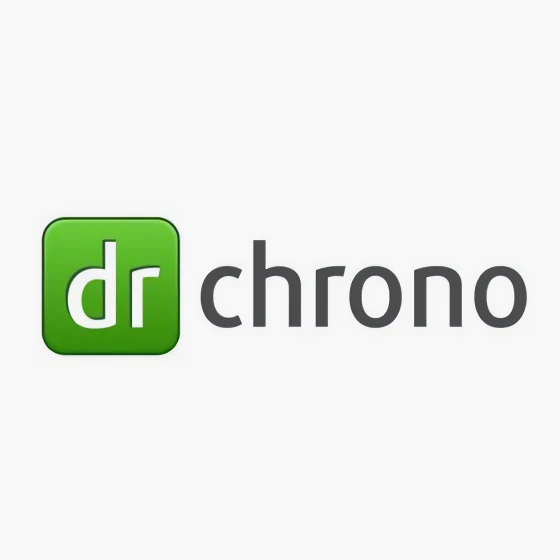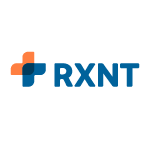10 Best Chiropractic Billing Software Shortlist
Here's my pick of the 10 best software from the 18 tools reviewed.
Our one-on-one guidance will help you find the perfect fit.
With extensive experience in chiropractic administration, I have witnessed firsthand the transformative power of reliable billing software. These innovative solutions are tailored to meet the unique needs of chiropractic clinics, ensuring accurate coding, efficient claim submission, and prompt reimbursement. By leveraging the capabilities of chiropractic billing software, chiropractors can focus on delivering exceptional patient care while minimizing administrative burdens and optimizing revenue cycles.
In essence, it is a comprehensive tool that empowers chiropractic practices to streamline their financial operations and achieve greater efficiency and profitability. If you're a chiropractor or involved in chiropractic clinic management, I invite you to explore my comprehensive list of top-rated chiropractic billing software solutions to find the perfect fit for your practice.
Why Trust Our Software Reviews
We’ve been testing and reviewing medical practice software since 2023. As medical practice technology researchers ourselves, we know how critical and difficult it is to make the right decision when selecting software. We invest in deep research to help our audience make better software purchasing decisions.
We’ve tested more than 2,000 tools for different medical practice use cases and written over 1,000 comprehensive software reviews. Learn how we stay transparent & check out our software review methodology.
Best Chiropractic Billing Software Summary
| Tool | Best For | Trial Info | Price | ||
|---|---|---|---|---|---|
| 1 | Best for out-of-pocket billing options | Not available | From $29/user/month, (billed annually). | Website | |
| 2 | Best for advanced medical billing tools | Free demo available | From $429/user/month (billed annually) | Website | |
| 3 | Best for customizable medical billing | Free demo available | From $199/user/month (billed annually) | Website | |
| 4 | Best for a simple and intuitive interface | Not available | From $25/user/month | Website | |
| 5 | Best for specialized chiropractic functionalities | Not available | From $249/user/month, (billed annually). | Website | |
| 6 | Best for chiropractic-specific EMR needs | Not available | From $85/user/month. | Website | |
| 7 | Best for intuitive practice management | Not available | Pricing upon request | Website | |
| 8 | Best for seamless integration with EHR | Not available | From $195/user/month, (billed annually). | Website | |
| 9 | Best for robust patient billing features | Not available | From $99/user/month. | Website | |
| 10 | Best for cloud-based practice management | Not available | From $99/user/month. | Website |
Best Chiropractic Billing Software Reviews
Healthie is a comprehensive web-based chiropractic practice management software designed specifically for healthcare providers. The software system allows providers to manage different aspects of their practice, including client engagement, telehealth, and billing. It's noteworthy for its billing features, particularly its excellent out-of-pocket billing options.
Why I Picked Healthie: In my selection process, I found Healthie to be unique due to its robust billing capabilities and user-friendly interface. It facilitates efficient out-of-pocket billing, offering more flexibility for both providers and patients. This key attribute justifies my decision that Healthie is best suited for practices that frequently use out-of-pocket billing options.
Standout Features & Integrations:
Healthie offers powerful features such as electronic health records (EHR), telehealth, insurance billing, and client portal, to name a few. Notably, its billing feature allows for both insurance and out-of-pocket options, providing versatility for diverse client needs. Moreover, it integrates well with platforms like Google Calendar and Zoom, aiding in streamlining practice operations.
Pros and cons
Pros:
- User-friendly interface facilitating easy navigation and use
- Effective integrations with other platforms such as Google Calendar and Zoom
- Robust billing capabilities, including out-of-pocket options
Cons:
- User support could be more responsive according to some user reviews
- Additional features like advanced analytics are available only in higher-tier plans
- Limited customization options for the platform might not cater to all specific needs
AdvancedMD is a cloud-based healthcare IT software offering features like electronic health records, practice management, patient experience, telemedicine, and reputation management. The tool's emphasis on advanced medical billing solutions, inclusive of automated billing rules and a payer rules engine, makes it a top pick for practices seeking extensive billing capabilities.
Why I Picked AdvancedMD: While comparing multiple healthcare IT platforms, AdvancedMD surfaced as a noteworthy contender due to its sophisticated medical billing features. Its ability to streamline complex billing tasks with automation, tracking, and comprehensive reports, sets it apart. In my judgment, AdvancedMD qualifies as the best tool for practices that need advanced medical billing tools due to its well-rounded and thorough billing features.
Standout Features & Integrations:
AdvancedMD's advanced billing tools, like its automated billing rules and payer rules engine, are particularly impressive. These tools simplify and accelerate the billing process while reducing errors. Furthermore, AdvancedMD integrates with various healthcare IT software, such as EHRs and patient portals, providing a comprehensive solution for medical practices.
Pros and cons
Pros:
- Includes a variety of features in addition to billing, such as EHR and patient experience tools
- Provides extensive integrations, allowing for a unified healthcare IT solution
- Offers sophisticated medical billing tools for increased efficiency
Cons:
- Some users have noted the need for more customization options
- Initial setup and learning curve may be steep due to advanced features
- The higher price point might not be suitable for all practices
DrChrono is a comprehensive healthcare EHR and practice management software that caters to a variety of healthcare facilities. Its billing module stands out for its high level of customizability, offering personalized solutions for diverse medical practice needs.
Why I Picked DrChrono: I selected DrChrono for its flexible approach to medical billing. While evaluating various healthcare IT solutions, DrChrono emerged as distinct due to its customizable billing module. It allows practices to create personalized billing workflows, a feature not common among many of its competitors. This unique aspect makes it the best fit for practices requiring customization in their medical billing procedures.
Standout Features & Integrations:
DrChrono's key features include its customizable billing module, electronic health records, and robust practice management tools. The billing module offers customizable templates and billing codes, enabling practices to tailor the software to their specific needs.
In terms of integrations, DrChrono works seamlessly with various third-party apps and services, which include billing services, labs, patient engagement platforms, and other medical databases, enhancing its functionality and convenience.
Pros and cons
Pros:
- Offers a wide range of integrations with third-party apps and services
- Comprehensive solution with EHR, practice management, and billing tools
- Highly customizable billing module caters to diverse practice needs
Cons:
- Support response times could be improved, as reported by some users
- Some users have reported a steep learning curve
- The level of customization might require more setup time
Noterro is a cloud-based healthcare practice management software that focuses on making administrative tasks easy for healthcare practitioners. It is recognized for its simplicity and highly intuitive interface, making it a top choice for those wanting a straightforward approach to managing their practice.
Why I Picked Noterro: Noterro caught my attention due to its commitment to simplicity and user-friendliness. During my evaluation, its intuitive interface set it apart from the rest, significantly reducing the learning curve typically associated with practice management software.
For these reasons, I believe Noterro is the best tool for those seeking a practice management solution that is easy to navigate and understand.
Standout Features & Integrations:
Some of Noterro's main features include appointment booking, invoicing, and note-taking, all designed with simplicity in mind. Its clear, easy-to-use dashboard allows quick access to all features, saving valuable time for users. When it comes to integrations, Noterro offers connectivity with popular third-party platforms such as Stripe for payments, making it easier for practices to handle financial transactions seamlessly.
Pros and cons
Pros:
- Integration with popular payment platforms like Stripe
- Useful features like appointment booking, invoicing, and note-taking
- Simple, intuitive interface makes navigation easy
Cons:
- Some users may prefer more customization options
- Limited integrations compared to some competitors
- While simplicity is a strength, it might lack advanced features found in other tools
ChiroTouch is a chiropractic-specific software offering robust functionalities for practice management system, chiropractic EHR, and billing. It distinguishes itself by providing features specialized for the chiropractic industry, facilitating precise care delivery and efficient administrative processes.
Why I Picked ChiroTouch: I picked ChiroTouch because of its focus on specialized chiropractic features, making it stand out among other generic practice management software. Its ability to provide industry-specific functionalities ensures the software is tailor-made for chiropractic practices, making it the best for specialized chiropractic functionalities.
Standout Features & Integrations:
ChiroTouch is packed with advanced features such as integrated payments, patient self-check-in, and detailed reporting, all designed specifically for chiropractic practices. Moreover, its seamless integrations with leading EHR systems, along with various payment gateways, ensure a comprehensive solution for billing and patient management.
Pros and cons
Pros:
- Advanced features like integrated payments and patient self-check-in
- Seamless integration with leading EHR systems
- Specialized chiropractic functionalities
Cons:
- Lack of a free trial period
- Pricing is based on an annual billing cycle
- Premium pricing could be prohibitive for smaller practices
PracticePerfect is a comprehensive practice management software that caters specifically to the needs of chiropractic practices. With a suite of specialized tools and features, it provides an efficient platform for managing various aspects of a chiropractic practice. Its focus on chiropractic needs makes it an optimal choice for practitioners in this field.
Why I Picked PracticePerfect: After going through numerous options, I selected PracticePerfect for this list because of its distinctive approach to chiropractic practice management. Not many tools on the market cater specifically to chiropractic needs, and PracticePerfect stands out in this regard. Its extensive suite of specialized features designed with chiropractors in mind makes it the best choice for chiropractic-specific EMR needs.
Standout Features & Integrations:
PracticePerfect shines with its chiropractic-specific features such as chiropractic SOAP notes, chiropractic-specific billing, and patient scheduling. Additionally, it offers telehealth capabilities, which are crucial in today's healthcare landscape. PracticePerfect also provides integration with popular payment processing and accounting software, enhancing the ease of financial management for chiropractic practices.
Pros and cons
Pros:
- Integrates with popular payment processing and accounting software
- Offers telehealth capabilities
- Tailored for chiropractic-specific needs
Cons:
- May lack certain features offered by general practice management software
- Interface may not be as intuitive as some other tools
- Higher price point compared to some competitors
ChartLogic is a robust practice management software designed for chiropractic billing and beyond. It offers intuitive and user-friendly tools for patient scheduling for consultations, claims management, reporting, and more, thus helping chiropractic practices streamline their operations efficiently.
Why I Picked ChartLogic: I selected ChartLogic for its intuitive interface and comprehensive functionality. It provides a user-friendly environment that simplifies complex billing tasks, making it a standout choice in its domain. With its ease of use and feature-rich offering, ChartLogic clearly stands out as best for intuitive practice management.
Standout Features & Integrations:
ChartLogic impresses with features such as electronic medical records (EMR), patient portal, and advanced reporting, which significantly aid in practice management. Additionally, it offers seamless integration with third-party systems and services, including labs, radiology centers, and more, enabling streamlined workflows.
Pros and cons
Pros:
- Effective integration with other healthcare systems and services
- Comprehensive suite of features for managing various operations
- Intuitive interface simplifies practice management
Cons:
- Complex functionality may require a learning curve for some users
- Lack of a free trial may limit initial user exploration
- Higher starting price compared to some alternatives
Platinum System is a dedicated cloud-based chiropractic software designed to assist chiropractic practices with billing, scheduling consultations, and EHR management. Its main strength lies in its seamless integration with chiropractic EHR, offering a unified and efficient system for managing patient data and billing.
Why I Picked Platinum System: In my judgment, Platinum System shines in its ability to integrate smoothly with electronic health records, a crucial factor in any chiropractic practice. I selected this software because it provides a centralized platform where EHR software and billing coexist without the need for toggling between systems, making it an ideal choice for practices seeking unified management.
Standout Features & Integrations:
Platinum System's core features include claim scrubbing, patient scheduling, billing, and reporting. It sets itself apart with its EHR integration, which allows for the effective tracking of patient records alongside billing. Notably, Platinum System also integrates well with several payment processing systems, enhancing its billing efficiency.
Pros and cons
Pros:
- Robust patient scheduling and reporting
- Claim scrubbing feature
- Seamless EHR integration
Cons:
- Minimum of 5 seats required
- Higher starting price compared to other software
- One-time setup fee required
ChiroSpring is a comprehensive practice management platform specifically designed for chiropractic offices. It's particularly recognized for its powerful patient billing capabilities, simplifying the entire process from charge capture to claims submission.
Why I Picked ChiroSpring: I chose ChiroSpring because it offers an exceptional range of features, specifically within its patient billing component. In comparing options, I determined that ChiroSpring stands out for its ability to streamline complex billing procedures, making it a suitable choice for clinics looking for a reliable billing system.
Standout Features & Integrations:
ChiroSpring boasts a plethora of features, such as advanced scheduling of in-person and online appointments, followups, detailed patient profiles, and electronic health records. However, its most valuable feature is its patient billing component, which efficiently manages the billing cycle and ensures quick payments. Additionally, ChiroSpring can seamlessly integrate with various payment processing systems and accounting software, delivering a more cohesive workflow.
Pros and cons
Pros:
- Detailed patient profiles
- Integration with payment processing systems
- Comprehensive patient billing features
Cons:
- Pricing is based on annual billing
- May be expensive for small practices
- Requires a one-time setup fee
ChiroFusion is a comprehensive, cloud-based chiropractic practice management software that provides chiropractors with a range of functionalities, from EHR to billing. Its cloud-based design ensures accessibility from any location, making it an excellent choice for practices seeking flexibility.
Why I Picked ChiroFusion: I chose ChiroFusion due to its unique cloud-based approach to chiropractic practice management. This cloud-first architecture offers unparalleled flexibility and accessibility, allowing practitioners to manage their practice from virtually anywhere. Hence, I believe ChiroFusion is the best for cloud-based practice management system.
Standout Features & Integrations:
ChiroFusion provides features such as online scheduling, patient reminders, and electronic claims, which are essential for effective practice management. Additionally, the software system integrates with a variety of payment processors and third-party EHR systems to further streamline administrative tasks.
Pros and cons
Pros:
- Integrates with various payment processors and EHR systems
- Features like online scheduling and patient reminders
- Cloud-based design for flexibility and accessibility
Cons:
- Limited customization options compared to on-premise solutions
- Potential for downtime due to internet-dependent operation
- May lack advanced features compared to more expensive options
Other Chiropractic Billing Software
- Genesis Chiropractic Software
For fully automated workflow
- Tebra
For comprehensive practice management
- CollaborateMD
Good for optimizing revenue with streamlined billing
- TotalMD
Good for integrated patient records and billing
- Eclipse Practice Management Software
Good for comprehensive chiropractic practice handling
- ClinicPro
Good for all-in-one medical office management
- ClinicSense
Good for seamless appointment scheduling and invoicing
- Accuro EMR
Good for advanced medical billing and patient scheduling
Chiropractic Billing Software Selection Criteria
When selecting the best chiropractic billing software to include in this list, I considered common buyer needs and pain points like reducing billing errors and improving claim processing efficiency. I also used the following framework to keep my evaluation structured and fair:
Core Functionality (25% of total score)
To be considered for inclusion in this list, each solution had to fulfill these common use cases:
- Manage patient billing
- Process insurance claims
- Track payment status
- Generate financial reports
- Handle patient scheduling
Additional Standout Features (25% of total score)
To help further narrow down the competition, I also looked for unique features, such as:
- Customizable billing templates
- Automated claim reconciliation
- Patient portal access
- Multi-location support
- Compliance with specific regulations
Usability (10% of total score)
To get a sense of the usability of each system, I considered the following:
- Intuitive user interface
- Easy navigation
- Minimal learning curve
- Aesthetic design
- Accessibility features
Onboarding (10% of total score)
To evaluate the onboarding experience for each platform, I considered the following:
- Availability of training videos
- Interactive product tours
- Access to webinars
- Presence of chatbots for assistance
- Availability of ready-to-use templates
Customer Support (10% of total score)
To assess each software provider’s customer support services, I considered the following:
- 24/7 support availability
- Multiple support channels
- Response time
- Quality of assistance
- Availability of a knowledge base
Value For Money (10% of total score)
To evaluate the value for money of each platform, I considered the following:
- Competitive pricing
- Features offered vs. price
- Availability of free trials
- Flexible pricing plans
- Transparency in pricing
Customer Reviews (10% of total score)
To get a sense of overall customer satisfaction, I considered the following when reading customer reviews:
- Overall satisfaction ratings
- Feedback on ease of use
- Opinions on customer service
- Reports on reliability
- Comments on feature effectiveness
How to Choose Chiropractic Billing Software
It’s easy to get bogged down in long feature lists and complex pricing structures. To help you stay focused as you work through your unique software selection process, here’s a checklist of factors to keep in mind:
| Factor | What to Consider |
|---|---|
| Scalability | Can the software grow with your practice? Consider whether it can handle an increase in patient volume and additional locations without a hitch. |
| Integrations | Does it connect with your existing systems? Ensure it integrates smoothly with your EHR, accounting software, and other tools you rely on daily. |
| Customizability | Can you tailor it to fit your workflows? Look for software that allows you to adjust settings and create custom reports that reflect your practice's needs. |
| Ease of use | Is it user-friendly for your team? Check if the interface is intuitive and requires minimal training, ensuring your staff can use it efficiently from day one. |
| Implementation and onboarding | How quickly can you get started? Evaluate the time and resources needed for setup, including training and support during the transition phase. |
| Cost | Does it fit your budget? Compare the pricing plans and consider any hidden fees. Ensure the cost aligns with the value and features provided. |
| Security safeguards | Are patient data and transactions secure? Verify that the software complies with industry standards and offers encryption and regular security updates. |
| Compliance requirements | Does it meet regulatory needs? Ensure the software adheres to HIPAA and other relevant regulations to avoid legal complications. |
What Is Chiropractic Billing Software?
Chiropractic billing software is designed to manage billing processes for chiropractic practices. Chiropractors, billing specialists, and office managers typically use these tools to simplify billing, reduce errors, and ensure timely payments. Automated claim processing, patient scheduling, and financial reporting features help with efficient practice management and improved cash flow. Overall, these tools provide essential support for maintaining a well-organized and financially healthy practice.
Features of Chiropractic Billing Software
When selecting chiropractic billing software, keep an eye out for the following key features:
- Automated claim processing: Streamlines the submission and tracking of insurance claims, reducing errors and speeding up payment cycles.
- Patient scheduling: Manages appointments efficiently, ensuring optimal patient flow and reducing wait times.
- Financial reporting: Provides insights into practice finances, helping you make informed decisions and track revenue performance.
- Customizable billing templates: Allows you to tailor invoices and statements to fit your practice's specific needs and branding.
- Patient portal access: Offers patients a secure way to view their billing information and make payments online, enhancing convenience and satisfaction.
- Compliance with regulations: Ensures adherence to HIPAA and other industry standards, safeguarding patient data and avoiding legal issues.
- Multi-location support: Facilitates management of billing operations across multiple practice locations, ensuring consistency and efficiency.
- Training and support resources: Provides easy access to tutorials and customer support, aiding in smooth onboarding and resolving issues quickly.
Benefits of Chiropractic Billing Software
Implementing chiropractic billing software provides several benefits for your team and your business. Here are a few you can look forward to:
- Reduced billing errors: Automated claim processing minimizes mistakes, leading to fewer rejected claims and faster payments.
- Improved cash flow: Efficient financial reporting and quicker claim processing help maintain a steady revenue stream.
- Enhanced patient satisfaction: Patient portal access allows patients to view and pay bills online, making the billing process more convenient for them.
- Better time management: Patient scheduling features ensure appointments are well-organized, reducing wait times and optimizing staff schedules.
- Increased compliance: Built-in compliance with regulations like HIPAA protects patient data and reduces legal risks.
- Scalability for growth: Multi-location support enables practices to expand operations without disrupting billing processes.
- Streamlined onboarding: Access to training and support resources ensures a smooth transition to the new system, reducing downtime.
Costs and Pricing of Chiropractic Billing Software
Selecting chiropractic billing software requires an understanding of the various pricing models and plans available. Costs vary based on features, team size, add-ons, and more. The table below summarizes common plans, their average prices, and typical features included in chiropractic billing software solutions:
Plan Comparison Table for Chiropractic Billing Software
| Plan Type | Average Price | Common Features |
| Free Plan | $0 | Basic billing management, limited claim processing, and basic reporting. |
| Personal Plan | $20-$50/user/month | Automated claim processing, patient scheduling, and customizable billing templates. |
| Business Plan | $50-$100/user/month | Multi-location support, advanced financial reporting, and patient portal access. |
| Enterprise Plan | $100-$200/user/month | Custom integrations, compliance management, and dedicated support services. |
Most Common Questions Regarding Chiropractic Billing Software (FAQ's)
What are the benefits of using a chiropractic billing software?
Using chiropractic billing software offers several advantages such as improved efficiency and accuracy, reduced administrative tasks, and enhanced revenue management. The key benefits include:
Streamlined billing: The software automates many of the billing tasks, reducing manual entry and associated errors.
Accurate coding: These tools often include coding assistance to ensure accurate and optimal claim submission.
Better financial management: The software provides comprehensive financial reports giving insights into the practice’s financial health.
Improved patient satisfaction: By handling billing efficiently and transparently, practices can enhance patient satisfaction.
Compliance: Billing software often includes features to help practices stay compliant with changing healthcare regulations.
With the assistance of a healthcare reimbursement specialist, chiropractic practices can avoid costly billing errors.
How does chiropractic billing software handle insurance claims?
Chiropractic billing software automates the submission and tracking of insurance claims. It integrates with clearinghouses to ensure claims are processed quickly and accurately, reducing the chance of errors. This automation helps your practice get paid faster and minimizes the administrative burden on your team.
Can chiropractic billing software improve patient satisfaction?
Yes, chiropractic billing software often includes patient engagement tools like portals for online bill payments and communication features. These tools allow patients easy access to their billing information and enhance their overall experience. Improving these interactions can lead to higher patient satisfaction and retention.
What data security measures are in place?
Chiropractic billing software typically includes data security features like encryption and compliance with HIPAA standards. These measures protect sensitive patient information from unauthorized access and breaches. Ensuring data security is crucial for maintaining trust and avoiding legal issues.
Is it easy to switch from server-based to cloud-based software?
Switching to a cloud-based system can be straightforward, especially if the software provider offers support during the transition. Cloud-based systems offer advantages like remote access and automatic updates. Check if your provider offers migration services to make the switch smoother for your practice.
How does the software integrate with other systems?
Chiropractic billing software often integrates with electronic health records (EHR) and practice management systems. These integrations ensure seamless data flow between systems, reducing manual data entry and saving time. Verify compatibility with your current systems before selecting a software solution.
What kind of customer support is available?
Most chiropractic billing software providers offer customer support through various channels like phone, email, and online chat. Some also provide resources like tutorials and community forums. It’s important to choose a provider that offers reliable support to help you resolve issues quickly.
What’s Next:
If you're in the process of researching chiropractic billing software, connect with a SoftwareSelect advisor for free recommendations.
You fill out a form and have a quick chat where they get into the specifics of your needs. Then you'll get a shortlist of software to review. They'll even support you through the entire buying process, including price negotiations.
























